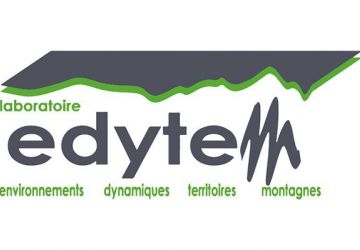Stage
Analysis of territorial actors games pile dwelling sites around the alpine lakes
Chambéry
Du 14/03/2016 au 09/09/2016

This internship of search research joins in the research program " Distinguish the territories of mountain. Critical approaches of the processes of labelling in the territorial constructions " - financing within the framework of Labex Item (Innovations and Territories of Mountain).
Within the framework of this program, the question of the territorial peculiarity concerns that he can be specific characters of places and their representations, their history and their projection. It is interested in objects and in modalities by which the distinction of a territory or a place builds itself. The accent concerns in particular the use of the categories of recognized labels or the recognitions (protective measures, specific regulations) working as labels.
As such, the inscription in the world heritage, as procedure to work as territorial label, been a part of dynamics questioned within the framework of this research project. The project "Singulariser" surrounds in a crossed and comparative various way grounds of studies, among which the big alpine lakes around sites palafittiques which one concerns the internship.
In June, 2011, the World Heritage Committee proceeded to the inscription in the world heritage of the serial property: " sites prehistoric palafittiques around the Alps ". Sites palafittiques correspond to prehistoric stations, consisted of housing environments grouped on pickets. Initially built on the banks of the alpine lakes, these vestiges were covered by the rise in the water level of lakes and are now situated under the water level. For the main part, it is about pickets with sedimentary layers containing of the archaeological material of first importance to understand the everyday life in alpine Europe of the Neolithic and the Bronze Age (between 4000 and 800 years before JC). The serial property registered on the world heritage consists of 111 sites distributed in six countries of the alpine space (France, Switzerland(Swiss), Germany, Austria, Italy, Slovenia). In France, 11 sites were selected and divide up on the lakes of Aiguebelette and Bourget (Savoie), Annecy and Lake Geneva (Haute-Savoie), Chalain and Clairvaux ( Jura).
Between six alpine countries, differences of perception observe. While sites palafittiques take advantage of a certain fame in Switzerland and are identified as territorial resources vector of tourist development, they remain essentially perceived side France as archaeological heritages being of the scientific domain. Their dimension " ressourciste " has difficulty in being activated. It is all the more paradoxical as these sites are registered on the world heritage, the inscription very often looked for by the territorial actors in strategies of singularisation / specification of territories.
The objective of this internship of search is exactly very to understand and to analyze the perceptions that the various territorial actors of sites palafittiques French side have. By territorial actors, we hear essentially at the same time institutional actors, but also private actors, or still elected representatives, occurring at the same time in the domains of the heritage, the culture, the tourism and the territorial development. To what extent sites palafittiques make heritage? For whom? For what? How? And more still, to what extent they are perceived as a territorial resource?
Institutions partenaires

Environnements, Dynamiques et Territoires de la Montagne (UMR 5204)
Porteur du projet

 Facebook
Facebook Forward
Forward Google+
Google+ LinkedIn
LinkedIn Twitter
Twitter




